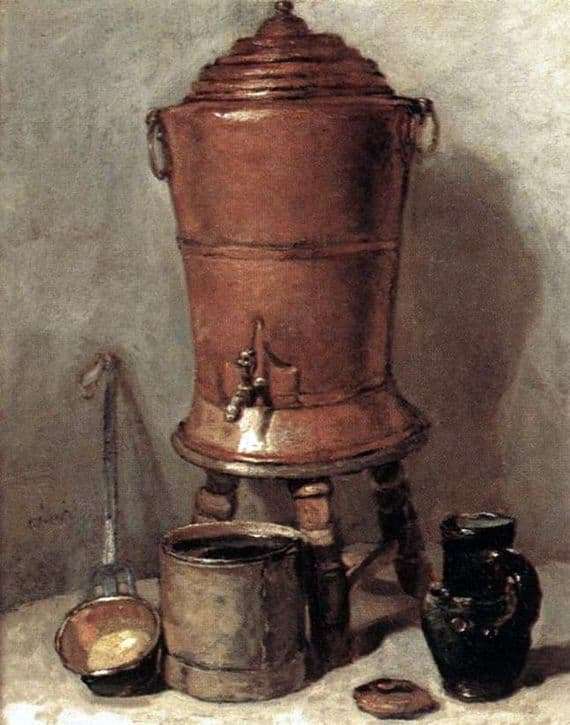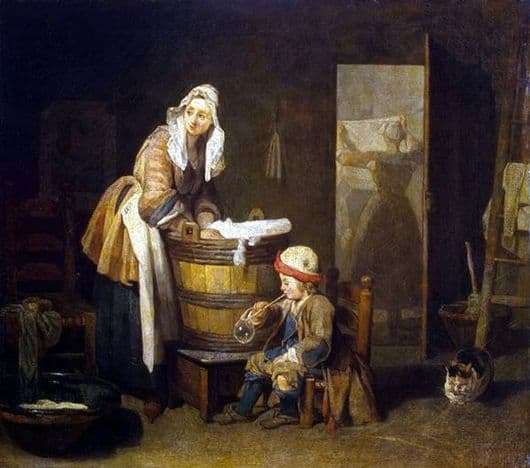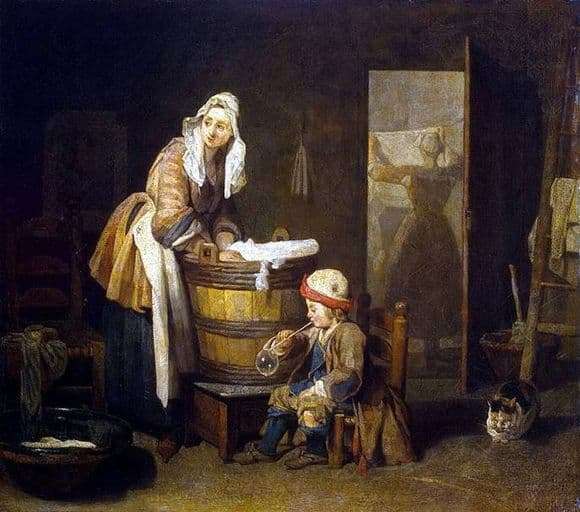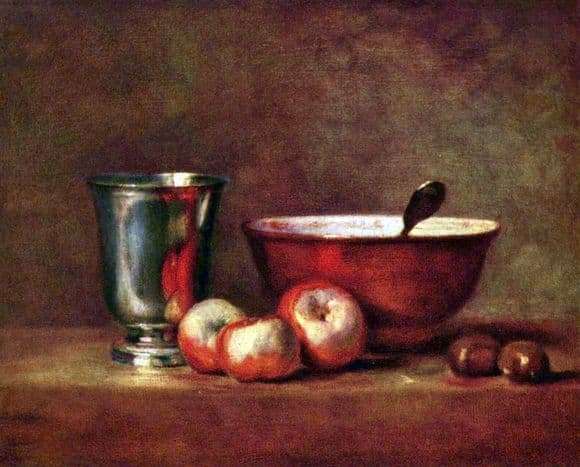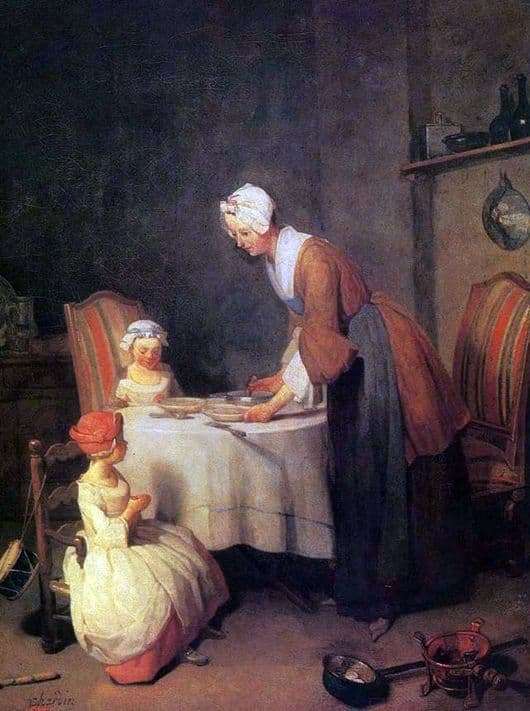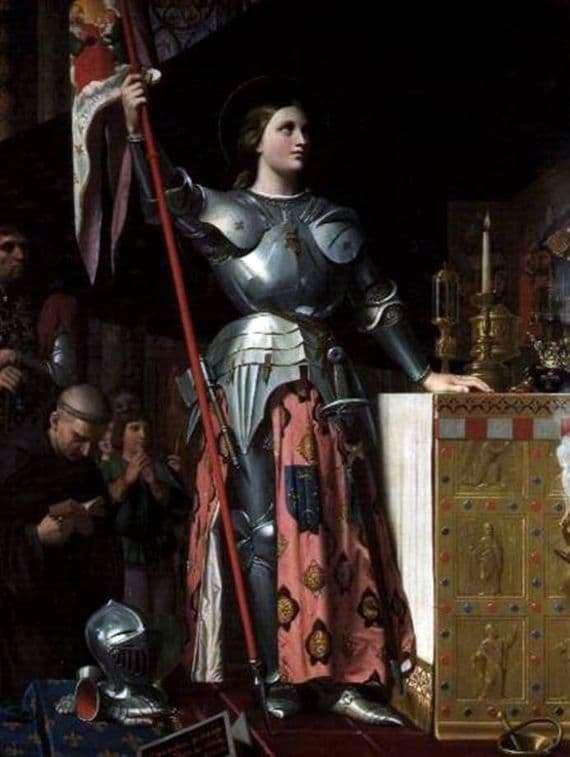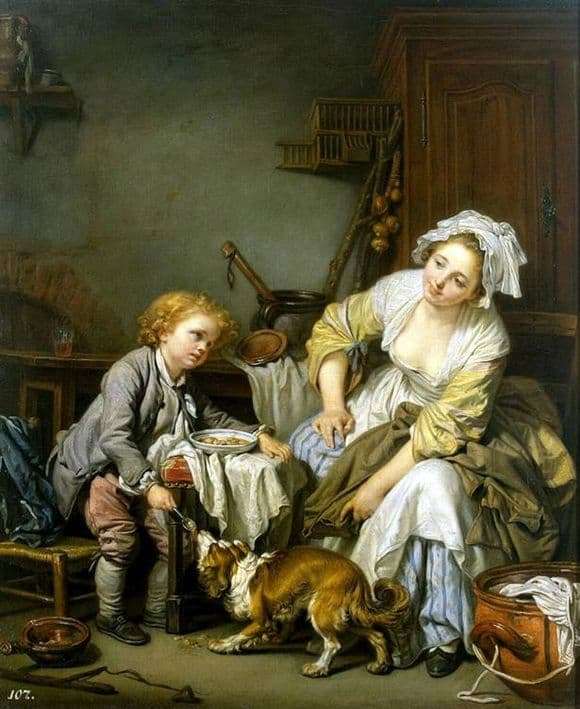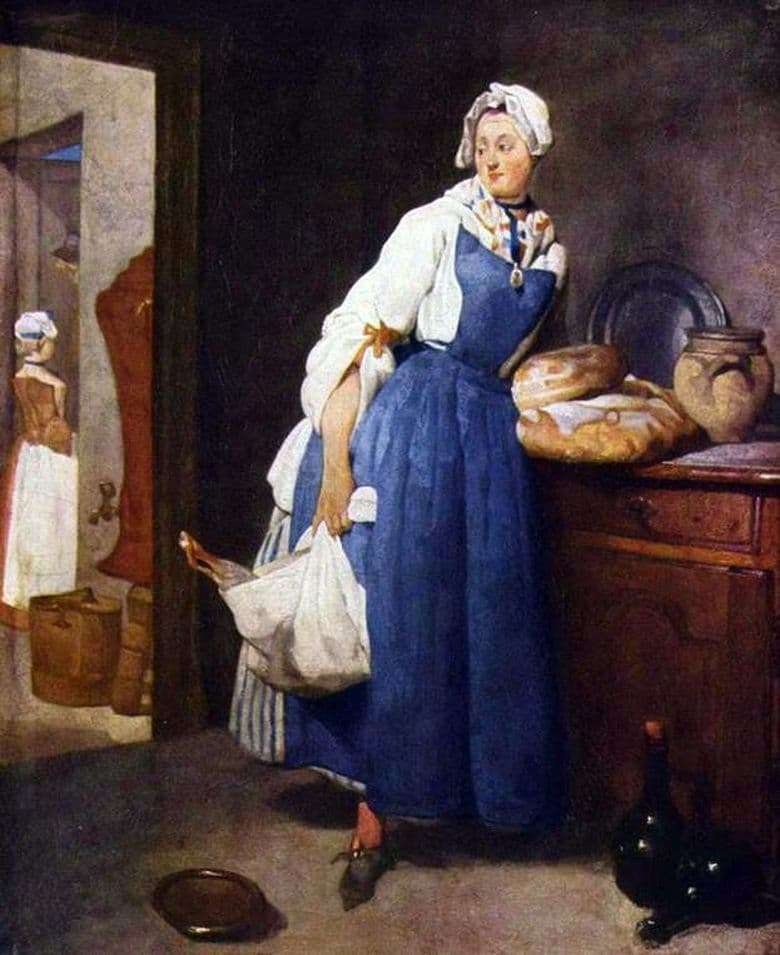
Created in 1739. Materials – canvas and oil, size – 47 by 38 cm. Located in the Louvre, Paris, France.
The French artist gained great popularity with still lifes and scenes from the everyday life of ordinary people, executed with great care and a great variety of color combinations. Even white for him has never been homogeneous, what even D. Diderot admired, considering that Chardin literally carries matter, air and light with a brush tip to the canvas.
Another name for the canvas – “Raznoshchitsa” – describes the occupation of a woman in the foreground. She had just come from the mall with large, crispy-looking and floured bread wrapped in matter, plucked up in poultry. She probably does not work in this house because her clothes are very different from the shape of the girl maid in the distance to the left.
The dress of the hawker is registered to the smallest detail: small stripes of the underskirt are perfectly combined with a white top, a cap and flowing folds of a blue apron, pink stockings slightly frivolously looking legs – with ribbons that support the sleeves and do not allow them to get dirty. All three main colors of her image (and part of the flag of France) are collected in a cute scarf on her shoulders. Femininity emphasizes and ribbon with a medallion or dry perfume on the neck.
Sparing no effort, the author paints the interior: color transitions and highlights, chiaroscuro on a wooden cabinet, bellied bottles of dark glass, a steady clay pot adjacent to a metal tray, even on a fallen lid, plastered walls and a copper side of a water tank in the next room. Thanks to the skill of the painter, the viewer easily understands the texture of the surfaces of these objects, transferred to one ordinary day of the first half of the XVIII century. and feels that morning and a little fussy overall atmosphere along with the faint aromas of the kitchen.
Description of the painting by Jean Baptiste Chardin “Return from the market”
